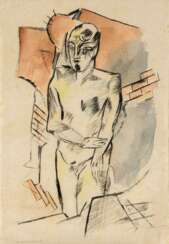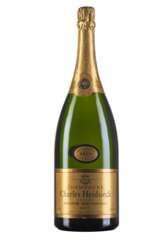hei&

Heinrich Mathias Ernst Campendonk was a painter and graphic designer born in Germany who became a naturalized Dutch citizen.


Heinrich Lossow was a German genre painter and illustrator. He was a prolific pornographer in his spare time.


Heinrich Mathias Ernst Campendonk was a painter and graphic designer born in Germany who became a naturalized Dutch citizen.


Heinrich Mathias Ernst Campendonk was a painter and graphic designer born in Germany who became a naturalized Dutch citizen.


Heinrich Mathias Ernst Campendonk was a painter and graphic designer born in Germany who became a naturalized Dutch citizen.


Heinrich Mathias Ernst Campendonk was a painter and graphic designer born in Germany who became a naturalized Dutch citizen.


Eugen Kampf was a German painter; associated with the Düsseldorf school of painting. He specialized in rural and village scenes.


Theo Champion was a German painter. His work was part of the painting event in the art competition at the 1928 Summer Olympics.


Theo Champion was a German painter. His work was part of the painting event in the art competition at the 1928 Summer Olympics.


Dennis Oppenheim was an American conceptual artist, performance artist, earth artist, sculptor and photographer. Dennis Oppenheim's early artistic practice is an epistemological questioning about the nature of art, the making of art and the definition of art: a meta-art that arose when strategies of the Minimalists were expanded to focus on site and context. As well as an aesthetic agenda, the work progressed from perceptions of the physical properties of the gallery to the social and political context, largely taking the form of permanent public sculpture in the last two decades of a highly prolific career, whose diversity could exasperate his critics.


Sigmund Walter Hampel, born in Vienna in 1867 and passed away in 1949 at Nußdorf am Attersee, was an esteemed Austrian painter and draughtsman. The son of a glass painter, Hampel honed his artistic skills and knowledge of design, material, and technique in his father's workshop. His formal education at the Vienna Academy of Art under notable figures like August Eisenmenger and Heinrich von Angeli further refined his abilities, especially in delicate coloring and technical proficiency.
A significant period of Hampel's career was his membership in the Hagenbund, a Vienna-based artists' association, from 1900 to 1911. This association was known for its avant-garde approach and played a critical role in shaping modern art in Austria. Hampel's works are recognized for their diverse range of subjects and styles, including figurative works, still life, and portraiture.
Some of Hampel's notable works include "Interieur" (1903), "Zimmer In Einem Alten Forsthaus" (1905), "Spanische Tänzerin (Porträt der Mlle E.)" (1904), "Blumenstillleben" (1910), and "Der Zwerg und das Weib" (1902-1903). These artworks exemplify his versatile approach to art, capturing a range of emotions and narratives through his distinct artistic style.
Hampel's contributions to the art world, particularly in Austria, are significant. His works continue to be appreciated by art enthusiasts, collectors, and experts in art and antiques for their aesthetic value and historical significance.
To stay updated on the latest information, sales, and auction events related to Sigmund Walter Hampel, sign up for our newsletter. This subscription will provide regular updates exclusively about new opportunities related to Hampel's works, ensuring you don't miss out on any significant developments in this area.


Michael Heiser is a contemporary American land-art artist who specialises in large-scale sculptures.




Heinrich Kamps or Heinz Kamps was a German painter and director of the Düsseldorf Academy of Fine Arts.
In 1922, Kamps first presented his work to the public by participating in an exhibition of the artists' association "Das Junge Rheinland". Soon, in 1925, he was already appointed professor at the Düsseldorf Academy of Fine Arts, and four years later he took over the management of the State Art School in Berlin-Schöneberg.
During the Nazi "Degenerate Art" campaign in 1937, Kamps' works were confiscated and lost. In 1941 he was forced to leave for Austria and then Poland; in 1943 his Berlin studio was bombed by the Allies and almost all of his early works destroyed.
After the end of World War II, in 1946 Kamps was elected professor and director of the newly opened Düsseldorf Academy of Art, which he directed until his death.


Guido Hampe était un peintre paysagiste allemand de la période romantique.


Heinrich Leinweber was a 19th century German painter. A master of the genre.


Heinrich Sperling was a German animal painter.


Eugen Kampf was a German painter; associated with the Düsseldorf school of painting. He specialized in rural and village scenes.


Eugen Kampf was a German painter; associated with the Düsseldorf school of painting. He specialized in rural and village scenes.


Eugen Kampf was a German painter; associated with the Düsseldorf school of painting. He specialized in rural and village scenes.


Eugen Kampf was a German painter; associated with the Düsseldorf school of painting. He specialized in rural and village scenes.


Arthur Kampf was a German painter. He was associated with the Düsseldorf school of painting.
Kampf's work is most strongly associated with the genre of traditional history painting, though throughout his lifetime he explored styles influenced by Impressionism and Art Nouveau. He was also celebrated for large scale portrait work and in particular children's portraiture. Kampf also worked extensively as an illustrator, contributing drawings to volumes by Shakespeare (1925), R. Herzog, History of Prussia (1913) and J.W. Goethe, Faust (1925). Kampf's artwork post World War II largely focused on religious themes.


Theo Champion was a German painter. His work was part of the painting event in the art competition at the 1928 Summer Olympics.


Hannes Schultze-Froitzheim, birth name Hans Werner Schultze, was a German painter and graphic artist.
Hannes Schultze-Froitzheim learned to draw from Max Bernuth, Heinrich Phieler and Hans Seiß in evening and Sunday classes at the Elberfeld Craftsmen's and Arts and Crafts School from 1920 onwards, in parallel with a commercial apprenticeship. In 1926 he transferred to the Düsseldorf Art Academy.
Schultze-Froitzheim sought the interplay of form and colour in his works. He examined the reciprocal relationship of forms to each other and often reduced them to the purely geometric body. He was also preoccupied with the interaction between light and dark forms as well as round and pointed shapes.
His stays by the sea in Scandinavia and Italy further inspired him to study and experiment with different forms. His late work is dominated by his so-called "compositions". In his mixed media he turns away completely from the figurative and uses different materials to depict the interplay between form and colour on the surface.


Hannes Schultze-Froitzheim, birth name Hans Werner Schultze, was a German painter and graphic artist.
Hannes Schultze-Froitzheim learned to draw from Max Bernuth, Heinrich Phieler and Hans Seiß in evening and Sunday classes at the Elberfeld Craftsmen's and Arts and Crafts School from 1920 onwards, in parallel with a commercial apprenticeship. In 1926 he transferred to the Düsseldorf Art Academy.
Schultze-Froitzheim sought the interplay of form and colour in his works. He examined the reciprocal relationship of forms to each other and often reduced them to the purely geometric body. He was also preoccupied with the interaction between light and dark forms as well as round and pointed shapes.
His stays by the sea in Scandinavia and Italy further inspired him to study and experiment with different forms. His late work is dominated by his so-called "compositions". In his mixed media he turns away completely from the figurative and uses different materials to depict the interplay between form and colour on the surface.

































































